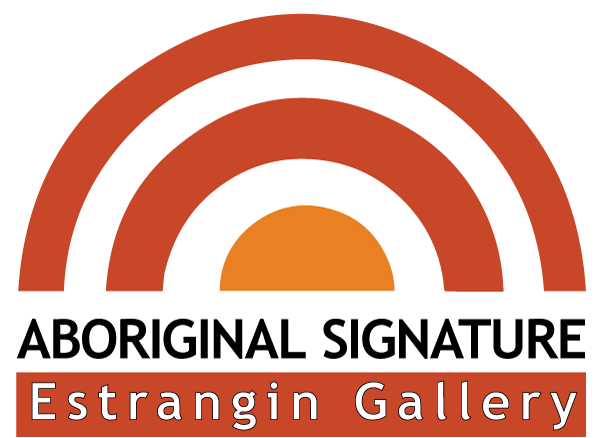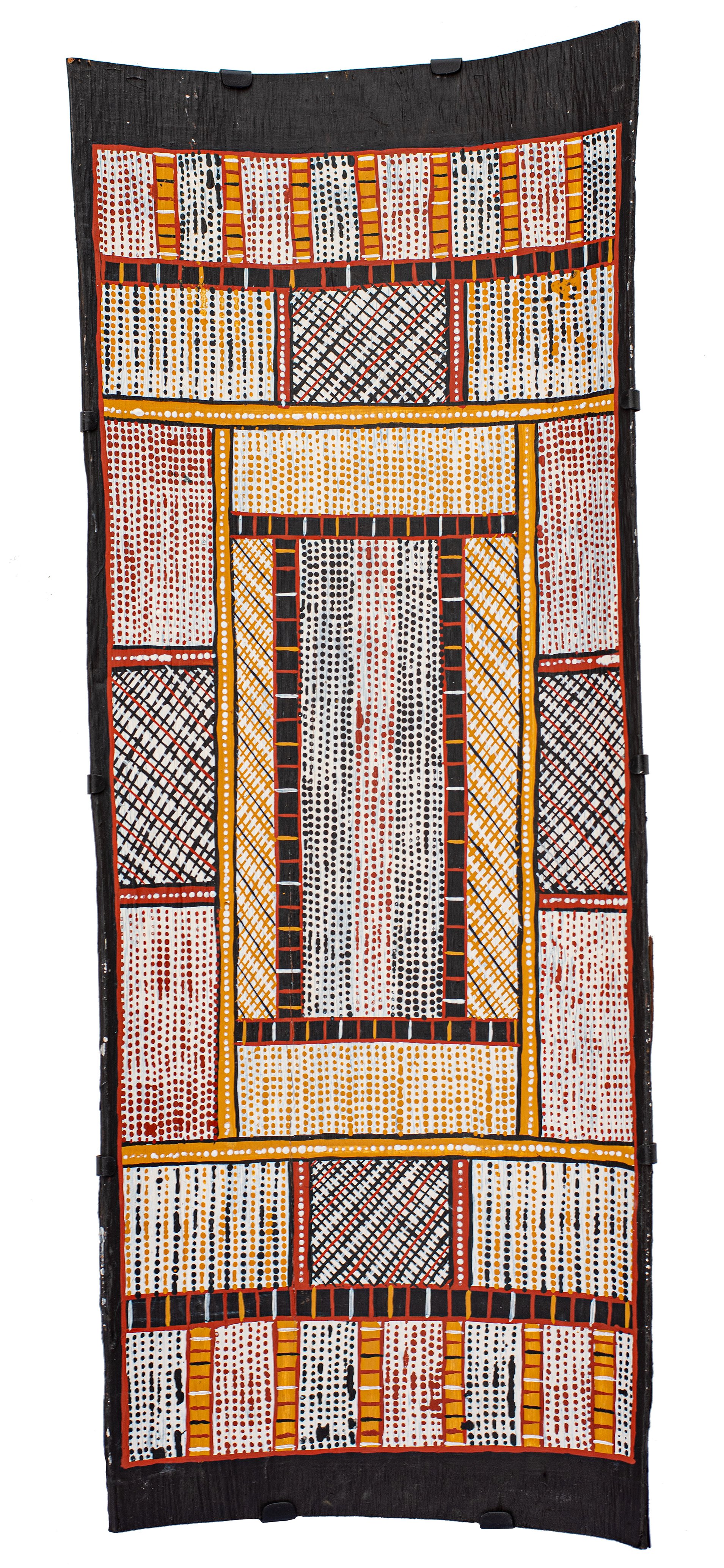Pedro Wonaeamirri - Pwoja-Pukumani Body Paint Design - 96 x 39 cm - 444-24
Pedro Wonaeamirri - Pwoja-Pukumani Body Paint Design - 96 x 39 cm - 444-24
Artiste : Pedro Wonaeamirri
Titre de l'œuvre : Pwoja-Pukumani Body Paint Design
Pigments naturels sur toile de lin Belge
Format : 96 x 39 cm
Provenance et certificat : centre d'art aborigène de Jalimara (Tiwi Island)
Référence de la peinture : 444-24
© Photo : Aboriginal signature with the courtesy of the artist & Jilamara Art centre (Tiwi Island)
Explications pour cette œuvre :
Pedro Wonaeamirri (1974) grew up in Pirlangimpi (Pularumpi) on Melville Island. He was educated in Darwin and returned to the Tiwi Islands in 1989, where he moved to Milikapiti the same year that Jilamara Arts and Crafts was incorporated. He has been exhibiting since this time and his artworks are in many national, state and private collections Australia-wide and overseas.
Pedro is a senior cultural leader on the Tiwi Islands with a significant and strong knowledge of the old Tiwi language and all of the songs and dance important in Tiwi culture. With a seat on the board of many organisations, Pedro is the current Vice President of Jilamara Arts and Crafts Association and a Director for Arnhem, Northern and Kimberley Artists (ANKA). Alongside his esteemed visual art career he has also published many essays on Tiwi art, culture and ceremony. His country, Paluwiyanga/ Andranganoo (Goose Creek) is on the eastern side of Melville Island “the land or country where I come from is from my father’s father, my grandfather”.
Pedro’s contemporary art practice has its foundations in Jilamara – “design” derived from ceremonial body painting and the ornate decoration applied to tutini poles, tunga (bark baskets) and associated ritual objects made for Pukumani (mourning) ceremony and Tiwi Yoi (dance).
Pedro continues to exclusively use ochres sourced from in and around his place of work in Milikapiti. He applies these colours of Tiwi Country with meticulous fine detail and tools traditionally used to apply decoration to the skin. "The designs are already in my head and I use the Kayimwagakimi our traditional wooden comb made from ironwood and natural ochres from the island to paint."
Tiwi Culture places special significance on the Pukumani (funeral) ceremony. Mourners are decorated using natural ochres to disguise themselves from the spirit of the deceased and song and dance is performed to honour the dead. Yirrinkiripwoja (bodypaint) is the source of many contemporary
Tiwi designs and performance of the pukumani as ritual helps to reinvigorate the imagery. The shortening of the word to Pwoja - also refers to 'best'.
You can find his artworks in the following prestigious collections :
National Gallery of Australia, Canberra – Museum of Victoria, Melbourne – National Gallery of Victoria, Melbourne – Art Gallery of New South Wales, Sydney – Art Gallery of South Australia – Art Gallery of Western Australia, Perth – Queensland Art Gallery, Brisbane – National Maritime Museum, Darling Harbour, Sydney – Commonwealth Institute, London – Artbank, Sydney – Gantner Myer Collection – Gordon & Marilyn Darling Collection, Melbourne – Levi-Kaplan Collection, Seattle, USA – The British Museum, England – Murdoch University Collection, Perth – Edith Cowan University Art Collection, Perth – Wesfarmers Collection, Perth – Museum of Contemporary Art, Sydney – Kluge-Ruhe Art Museum, USA

